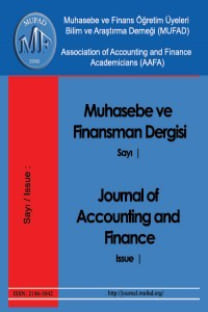Açıklık ve Para Politikasının Etkinliği: Türkiye Uygulaması
Ekonomik teori, para politikasının üretimi artırma yeteneğinin ekonominin dışa açılması ile azaldı-ğını, buna karşın enflasyonu artırıcı bir etkisinin olduğunu iddia etmektedir. Bu çalışmada, Türkiye için 1950-2003 verileri kullanılarak teorik tahminlerin bu çalışmanın sonuçlarıyla ne kadar tutarlı olduğu tek-rar test edilmiştir. Makalenin ampirik sonuçları, ekonomi dışa açıldıkça para arzının üretim üzerindeki etkisinin azalacağını varsayan teorik tahminleri desteklemektedir. Hangi değişkenlerin GDP’ yi belirle-diğini göstermek için En Küçük Kareler Yöntemi (OLS) kullanılmıştır. İlk olarak, reel petrol fiyatlarındaki artışın GDP’ yi negatif olarak etkilediği bulunmuş, aynı zamanda, reel para arzındaki artışın da GDP’ yi olumsuz olarak etkilediği, ancak bu etkinin istatistiki olarak anlamlı olmadığı sonucu elde edilmiştir. Da-ha sonra, reel para arzı ve dışa açıklığın bir dönem gecikmesi modele dahil edilmiş ve dışa açıklığın katsayısı negatif ve istatistiki olarak anlamlı bulunmuştur. Ayrıca, enflasyon oranını nelerin belirlediği OLS kullanılarak test edilmiştir. Sonuçta, teoride beklendiği gibi, para arzı ve enflasyon arasında pozitif bir ilişki olduğu saptanmıştır.
Anahtar Kelimeler:
Açıklık, para politikası, enflasyon.
Openness and Effectiveness of Monetary Policy: Evidence from Turkey
(Openness and Effectiveness of Monetary Policy: Evidence from Turkey) Economic theory predicts that the ability of monetary policy to increase output decreases, while in-flation increases with open economy. In this study, these predictions are retested over the open econ-omy of Turkey for annual data from 1950 to 2003 to see how the theoretical predictions are consistent with this paper’s empirical results. The paper’s empirical results support the theoretical predictions that the more open an economy is the smaller the output effects of a given change in the money supply. Ordinary Least Squares (OLS) is used in order to identify which variables determine the rate of growth of real GDP. Firstly, it has been found that increases in real oil prices negatively affect real GDP, also, the growth rate of real money supply affects GDP negatively, but this effect is not statististically signifi-cant. Then, the lags of real money supply and openness have been added to the model and the coeffi-cient of openness is negative, but statistically significant. Also, in order to identify the determinants of inflation rate, the OLS has been used in this paper. In sum, as expected in the theory, it has been found that only the rate of growth of money supply affects inflation rate.
Keywords:
Openness, monetary policy, inflation.,
- ISSN: 2146-3042
- Yayın Aralığı: Yılda 4 Sayı
- Başlangıç: 2005
- Yayıncı: Muhasebe ve Finansman Öğretim Üyeleri Derneği (MUFAD)
Sayıdaki Diğer Makaleler
Ana Hatlarıyla IFAC Muhasebeci Eğitimi Standartları
Mustafa Kemal YILMAZ, Gökhan MİRAHMETOĞLU
Faaliyet Tabanlı Maliyet-Hacim-Kâr Analizi
Çevre Kirlenmesi ve Çevre Koruma Bağlamında Çevre Muhasebesinin Önemi
17. Dünya Muhasebeciler Kongresi ve Değerlendirilmesi
Ürün Maliyetini Belirlemenin Bilgi Değeri Nedir?
Hisse Senedi Swapları ve Hisse Senedi Swaplarının Fiyatlandırılması
